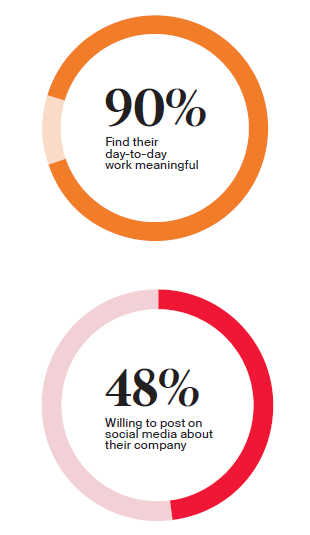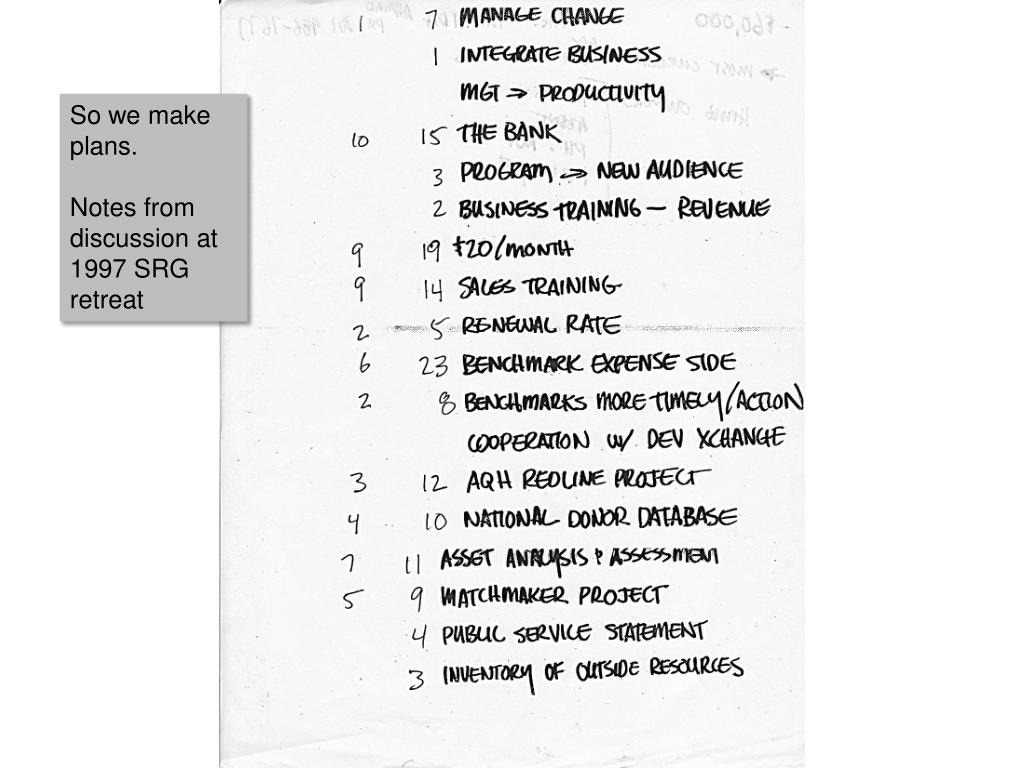Three Things Datebook for the week of 1/10/2022
This week's Datebook begins by being all about the money. Then, we shift to employee engagement and your "employee brand." Finally, a tribute to Tom and Terry.
First, a quick shout-out to Dave Isay and the StoryCorps team for a terrific feature on last night’s edition of the CBS newsmagazine 60 Minutes.
THING ONE: It’s All About the Money
As we head into week two of 2022, we’re seeing the return of several webinars that should be of interest to public radio folks.
One of the major trends discussed in nonprofit circles is the increasing popularity of donating cryptocurrencies to charities in America. According to a study by Fidelity Charitable, owners of cryptocurrencies such as Bitcoin or Ethereum are a disproportionately more charitable group, with 45% of cryptocurrency investors donating $1,000 or more to charity in 2020, compared to 33% of the entire investor population.
In addition, The Giving Block, a popular cryptocurrency donation platform, expects to raise more than $1 billion this year through its work with nonprofits and donors. The group raised more than $100 million in 2021, according to co-founder Alex Wilson.
Crypto-giving may be particularly attractive among Millennials, as nearly half of this group believe cryptocurrency is a wise investment, compared to only 6 percent of Baby Boomers.
With this as a framework, crypto is only getting more popular as a giving vehicle, as younger, charitable generations invest in this new asset class and learn about the tax savings they can see by donating crypto over cash. But, unfortunately, many nonprofits, including public media organizations, are not in a position to accept crypto, and those that do often have a cumbersome process for donors.
To help sort through the maze of this new form of charitable giving, our good friends at FreeWill are offering a free webinar to help the nonprofit sector learn what crypto is, the trends and changes impacting crypto giving, and how nonprofits can fundraise and accept crypto donations.
The one-hour free webinar takes place on Tuesday, January 11, 2022, at noon (Eastern). You can register here for the session.
Another revenue-centric webinar happening this week focuses on on-air fundraising spots. This past fall, Greater Public and the Public Radio Program Directors Association (PRPD) sponsored an inaugural fundraising spot contest to find the best fundraising spots in public radio.
On Wednesday, January 12, 2022, at 2:00 pm (Eastern), webinar attendees will be able to listen to the winning spot, hear from the winning producer, and discuss the essential components of the most effective on-air spots.
Leading the session will be Abby Goldstein, President & Executive Director with PRPD. Joining Abby will be Jay Clayton, Individual Giving Advisor at Greater Public, and Corey Goldberg, Operations Assistant with WBGO in Newark, NJ. This should be a fun session that will hopefully get the creative juices flowing to create awesome audio to inspire giving to public radio. Register for this webinar at this link.
Finally, a reminder that on Wednesday, January 19 at 4 pm (Eastern), I’ll be moderating a conversation with some great public media colleagues1 exploring strategies to help stations acquire new donors. This is in light of the trend that even as public radio stations are still growing revenue, they have accomplished it for the last twelve consecutive quarters without increasing the number of current donors in the file.
You can sign up for this State of the System: A Radio Roundtable webinar hosted by CDP at this link.
THING TWO: Aligning Your Employee Brand with Your Consumer Brand
In the September 16, 2021 edition of Three Things, I shared some insights from a study conducted by the creative consultancy group Long Dash of Fortune 500 companies seeking to find out what brings a meaningful work experience to its employees. The study also explored what leaders can do to cultivate a more engaged workforce and how that engaged experience can translate into being a brand ambassador for their employer.
The research premise was that the happier employees are in the workplace, the better brand ambassadors they will be for their employer.
The results of the research, though, was that while the vast majority of employees feel proud to work for their organizations, less than half are willing to share positive info about their companies on social media.
According to the study, the disconnect is that employees do not get the sense that leadership has successfully translated the organization’s business objectives to match their employees’ values. In addition, younger employees especially are susceptible to not seeing or feeling this connection with their organizations.
Public media is certainly in a moment where many leaders at stations and networks are seeking to find new ways to retain and recruit talent. The combination of the stress from the past two years of the pandemic (remote work, a relentless news cycle, financial challenges, etc.) and increasing opportunities outside of the industry have resulted in higher than usual workforce turnover. Plus, attracting talent is increasingly more difficult at many organizations.
On Thursday, January 13, 2022, at 1:00 pm (Eastern), Adweek is hosting a free webinar with two employer branding experts that will seek to provide a blueprint for how to run creative and impactful employee advocacy programs that strengthen your overall brand perception.
The session promises to help attendees find and maintain a genuine tone of voice across all touchpoints in your employer branding. The speakers are Alex Ayin, the Marketing Director for the London-based employer branding agency Wiser, and Karl Wikstrom, the Creative Director with the brand management platform Frontify.
Ayin and Wikstrom will provide some best practices on increasing brand engagement among employees and discuss how your “employer brand” can attract and retain top talent.
As I’ve written before, getting out of our public media bubble is always helpful as we seek new ideas to address our challenges inside the industry. This session promises to offer some good information that station leaders might utilize in their organizations.
THING THREE: A Tribute to Tom and Terry
Today marks the official transition in leadership at the Station Resource Group as Bill Davis moves into the role as Principal at SRG.
As most know, the SRG is the alliance of leading public media organizations that have been influential in advancing public radio’s service to the American people for nearly four decades.
Bill’s two very sizable feet will seek to fill the four shoes left behind by Tom Thomas and Terry Clifford, the co-CEOs who have led SRG since its founding in 1984.
Tom and Terry have made it clear that they will continue to be involved in the work of public radio in the months and years ahead. However, in this moment of transition, I would like to take a few paragraphs to offer my gratitude to them and remind those who may be somewhat new to public radio of these two individuals’ impact on the industry.
The first sentence of their bios on the SRG website is a pretty accurate headline but, in many ways, doesn’t come close to fully capturing what Tom and Terry have meant to public radio.
Tom Thomas and Terry Clifford have inspired advances across almost every aspect of public media and have shaped key policies at CPB, NPR, the FCC, and in Congress.
That sentence is not an understatement about Tom and Terry’s role in public radio over the past 40 years.. Yet, in reality, Tom and Terry’s legacy to public radio reaches far beyond this statement.
Before taking on the leadership with the founding of NFCB in 1975, Tom and Terry worked at KDNA, a predecessor (although on a different dial position) to KDHX, the community station in St. Louis. If you’re looking for a good story, ask Tom about doing a pledge drive for the station on the rooftop of the Continental-Life Building, where the station’s transmitter and the antenna were located.
It’s important to remember that they started at a station.
It was a challenging and transformative time for public radio when Tom and Terry moved from NFCB to become co-CEOs of the newly created Station Resource Group in 1984. The system was coming off the NPR financial crisis of 1983 along with the creation of American Public Radio2 that same year, and stations were seeking a more significant role in forging the industry’s future.
Tom and Terry took on this role with SRG and delivered time and time again for public radio.
Now, this would be a very long post if I were to list all of Tom and Terry’s accomplishments leading SRG so I’ll refrain from that task. And I’m sure that others will detail their remarkable achievements.
But the one thing I do want to acknowledge is that their work has always been about Stations.
Whether in a boardroom somewhere in Washington DC discussing policy changes to the Corporation for Public Broadcasting’s Community Service Grant program or working the easel pad at an SRG retreat in some scenic location, the focus was always on how to help stations better serve their local communities.
I’m sure that Tom has lost count of the board and staff retreats that he has led at SRG member stations over the years. And how Tom and Terry have synthesized the conversations in hundreds, if not thousands, of meetings and discussions into transformative action plans.
But, again, it’s always been all about Stations.
These are the gifts that Tom Thomas and Terry Clifford have provided to public radio.
And this is the time, perhaps now more than ever, that the focus needs to be on local stations3 servings cities and towns across America. With the need to fill the gaps left behind by the struggling newspaper industry as well as the importance of continuing to celebrate the cultural health in communities, strong stations and smart strategies are essential for public radio to meet the increased demands and expectations to succeed in our changing media environment.
Through decades of leadership in public radio, Tom and Terry have secured a rightful place in creating and building this institution of public radio. And I’m confident that their work isn’t complete.
But for now, as they step away from their leadership role at SRG, I want to offer my appreciation for the intelligence, wit, and passion that they have brought to this industry.
Tom and Terry, thank you for everything you’ve done.
Joining the conversation will be Melanie Coulson – Executive Director of Member Station Services for Greater Public, Jill Hirshi - Development Director with Yellowstone Public Radio, Susannah Michaels – Direct Mail & Sustainer Coordinator with Wisconsin Public Radio, Greg Petrowich - President and CEO with WFYI Public Media, Stephanie Patterson – Chief Customer Officer with CDP, and Ken Siebert – General Manager with Yellowstone Public Radio.
American Public Radio changed its name to Public Radio International in 1994. It then merged with PRX in 2018.
Feel free to now call stations “public media organizations”






